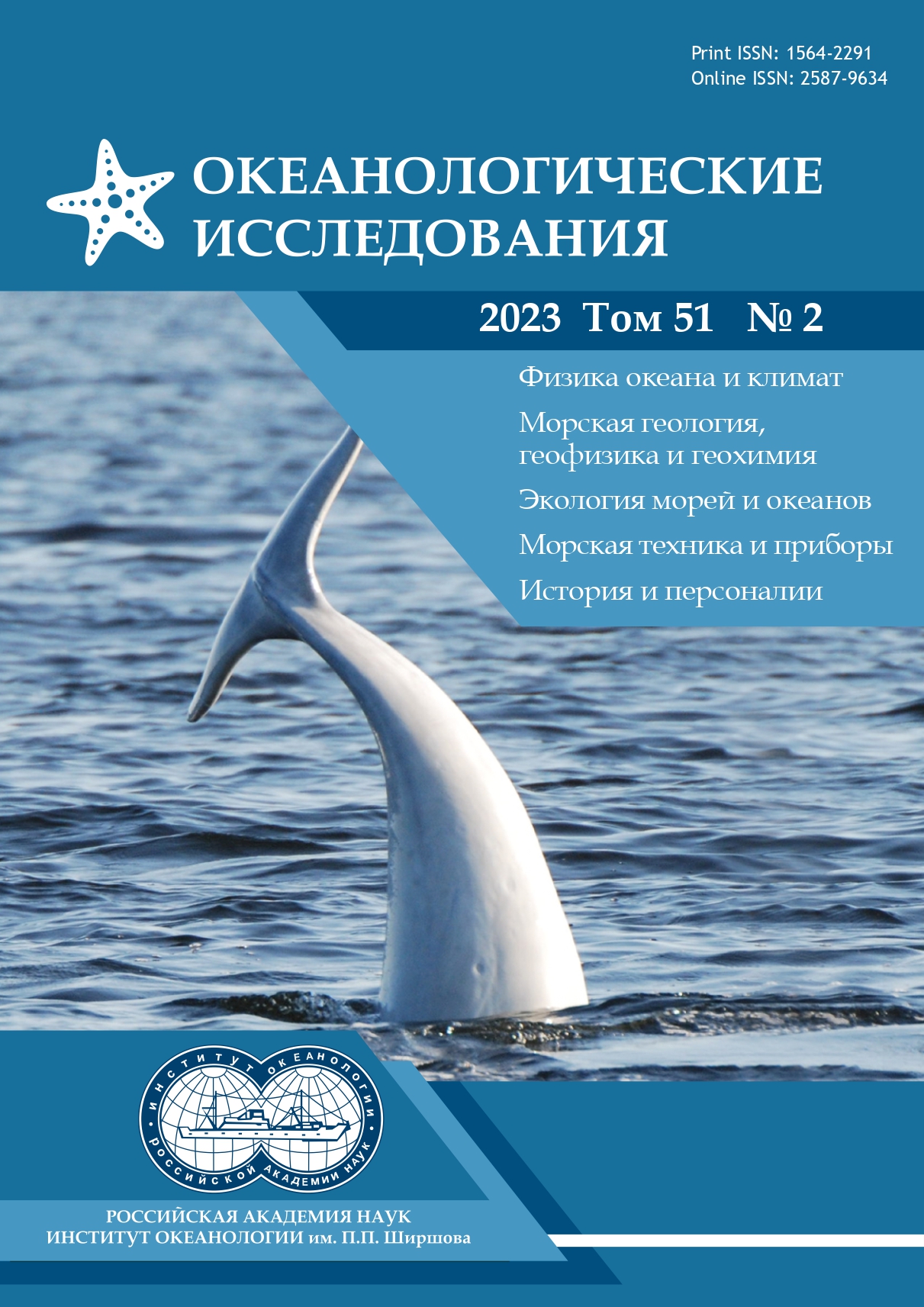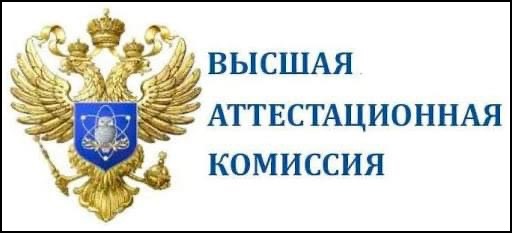ЭВТРОФИРОВАНИЕ ВОД И РАСПРЕДЕЛЕНИЕ ЗООПЛАНКТОНА БАЛТИЙСКОГО МОРЯ В УСЛОВИЯХ АНОМАЛЬНОГО ПРОГРЕВА ВОД ЛЕТОМ 2021 г.
Аннотация
Получены данные о структуре, обилии и пространственном распределении планктона на российской акватории в юго-восточной части, а также в центральной части Балтийского моря в период аномально теплых климатических условий лета 2021 г. Наибольшее количество зоопланктона и максимальные концентрации хлорофилла «а» (эвтрофный уровень) были отмечены в прибрежном районе и мористее до изобаты 40 м. В более глубоководных зонах эвтрофирование вод снижалось до мезотрофного уровня. Наименьшие величины хлорофилла «а», численности и биомассы зоопланктона наблюдались в глубоководной зоне (глубины 100–200 м), расположенной преимущественно в Готландской и Гданьской впадинах. Превышение климатической нормы по температуре приземного воздуха и воды летом 2021 г. оказало разнонаправленное влияние на планктон. Интенсивное развитие водорослей, благоприятное для питания зоопланктона, распространилось от прибрежный зоны на мористый район до глубин 40 м. Прогрев воды и обеспеченность пищей способствовали росту обилия теплолюбивых видов зоопланктона и расширению высокопродуктивных зон в мористой акватории. Вместе с тем наблюдалось снижение обилия ряда наиболее крупных и ценных для рыб-планктофагов видов зоопланктона (Pseudocalanus elongatus и другие). Такие изменения в численности и биомассе планктона отмечались в последние десятилетия и четко проявились в аномально теплом 2021 году.
Литература
- Александров С. В., Гусев А. А., Семенова А. С. Планктонные и бентосные сообщества юго-восточной части Балтийского моря в летний период 2018–2019 гг. // Океанологические исследования. № 51 (1). 2023. С. 91–113. https://doi.org/10.29006/1564-2291.JOR-2023.51(1).5.
- Александров С. В., Гусев А. А., Дмитриева О. А., Семенова А. С., Чукалова Н. Н. Планктонные и бентосные сообщества Балтийского моря у северного побережья Самбийского полуострова летом и осенью 2017 года // Труды АтлантНИРО. 2019. Т. 3. № 2 (8). С. 38–58.
- Доклад об особенностях климата на территории Российской Федерации за 2021 год. Москва: Росгидромет, 2022. 104 с.
- Дубравин В. Ф., Капустина М. В., Кречик В. А. Эволюции гидрохимических структур вод Балтийского моря // Известия КГТУ. 2017. № 46. С. 24–33.
- Израэль Ю. А., Цыбань А. В., Орадовский С. Г., Пака В. Т., Щука С. А., Голенко Н. Н., Кудрявцев В. М., Баринова С. П., Мошаров С. А. Исследование экосистемы Балтийского моря. СПб: Гидрометеоиздат, 2005. 324 с.
- Киселев И. А. Планктон морей и континентальных водоемов. Л.: Наука, 1969. 657 с.
- Очерки по биологической продуктивности Балтийского моря. Т. 2: Планктон. М., 1984. 375 с.
- Кудрявцева Е. А., Александров С. В., Дмитриева О. А. Сезонная изменчивость первичной продукции и состава фитопланктона в береговой зоне российского сектора Гданьского бассейна Балтийского моря // Океанологические исследования. 2018. Т. 46. № 3. С. 99–115. https://doi.org/10.29006/1564-2291.JOR-2018.46(3).7.
- Полунина Ю. Ю., Кречик В. А., Пака В. Т. Пространственная изменчивость зоопланктона и гидрологических показателей вод в Южной и Центральной части Балтийского моря в позднелетний сезон 2016 г. // Океанология. 2021. Т. 61. №. 6. С. 958–968. https://doi.org/10.31857/S0030157421060113.
- Полунина Ю. Ю., Родионова Н. В. Характеристика зоопланктонного сообщества // Система Балтийского моря. М.: Научный мир, 2017. С. 258–291.
- Ульянова М. О., Сивков В. В., Баширова Л. Д. (и др.) Океанологические исследования Балтийского моря в 51-м рейсе ПС «Академик Сергей Вавилов» (июнь–июль 2021 г.) // Океанология. 2022. Т. 62. № 4. С. 667–669. https://doi.org/10.31857/S003015742204013X.
- Хлебович В. В. Критическая соленость биологических процессов. Наука: Ленингр. отд-ние, 1974. 235 с.
- Aleksandrov S. V., Zhigalova N. N., Zezera A. S. Long-Term Dynamics of Zooplankton in the Southeastern Baltic Sea // Russian Journal of Marine Biology. 2009. Vol. 35. No. 4. P. 296–304. https://doi.org/10.1134/S106307400904004X.
- Andrulewicz E., Kruk-Dowgiallo L., Osowiecki A. An expert judgment approach to designating ecosystem typology and assessing the health of the Gulf of Gdansk // Managing the Baltic Sea. Coastline Reports. 2004. Vol. 2. P. 53–61.
- Climate change in the Baltic Sea Area: HELCOM thematic assessment in 2013. Baltic Sea Environment Proceedings. 2013. No. 137. 70 p.
- Dippner J. W., Kornilovs G., Sidrevics L. Long-term variability of mesozooplankton in the Central Baltic Sea // Journal of Marine Systems. 2000. Vol. 25 (1). P. 23–31. https://doi.org/10.1016/S0924-7963(00)00006-3.
- HELCOM: Eutrophication in the Baltic Sea – Approaches and methods for eutrophication target setting in the Baltic Sea region. Baltic Sea Environment Proceedings. 2013. No. 133. 134 p.
- HELCOM: Thematic assessment of eutrophication 2011–2016. Baltic Sea Environment Proceedings. 2018. No. 156. 106 p.
- Klais R., Lehtiniemi M., Rubene G., Semenova A., Margonski P., Ikauniece A., Simm M., Pollumae A., Griniene E., Makinen K., Ojaveer H. Spatial and temporal variability of zooplankton in a temperate semi-enclosed sea: implications for monitoring design and long-term studies // Journal of Plankton Research. 2016. Vol. 38. No. 3. P. 652–661. https://doi.org/10.1093/ plankt/fbw022.
- Kotov A. A., Karabanov D. P., Van Damme K. Non-indigenous Cladocera (Crustacea: Branchiopoda): From a few notorious cases to a potential global faunal mixing in aquatic ecosystems // Water. 2022. Vol. 14. No. 18. 2806. P. 1–33.
- Kudryavtseva E. A., Aleksandrov S. V. Hydrological and hydrochemical underpinning of primary production and division of the Russian sector in the Gdansk Basin of the Baltic Sea // Oceanology. 2019. Vol. 59. No. 1. P. 49–65. https://doi.org/10.1134/S0001437019010077.
- Litvinchuk L. F., Telesh I. V. Distribution, population structure and ecosystem effects of the invader Cercopagis pengoi (Polyphemoidea, Cladocera) in the Gulf of Finland and the open Baltic Sea // Oceanology. 2006. Vol. 48 (S). P. 243–257.
- Mohrholz V. Major Baltic inflow statistics – Revised // Frontiers in Marine Science. 2018. Vol. 5. P. 384. https://doi.org/10.3389/fmars.2018.00384.
- Möllmann C., Kornilovs G., Fetter M., Köster F. W. Climate, zooplankton, and pelagic fish growth in the central Baltic Sea // ICES Journal of Marine Science. 2005. Vol. 62 (7). P. 1270–1280. https://doi.org/10.1016/j.icesjms.2005.04.021.
- Plinski M., Żmijewska M. I., Sapota M., Witek B., Mudrak S. Predictional model of biocenotic changes in offshore Baltic plankton due to temperature increase // Oceanological and Hydrobiological Studies. 2003. Vol. 32. No. 3. Р. 29–41.
- Schulz J., Peck M. A., Barz K., Hirche H.-J. Spatial and temporal habitat partitioning by zooplankton in the Bornholm Basin (central Baltic Sea) // Prog. Oceanogr. 2012. No. 107. P. 3–30.
- Snoeijs-Leijonmalm P., Schubert H., Radziejewska T. Biological Oceanography of the Baltic Sea. Springer, 2017. 683 p. https://doi.org/10.1007/978-94-007-0668-2.
- Telesh I., Skarlato S., Kube S., Rohde H., Schubert H. Zooplankton of the Baltic Sea: Introduction to the distant learning module. St. Petersburg: Rostock, 2015. 124 p.
- Viitasalo M., Bonsdorff E. Global climate change and the Baltic Sea ecosystem: direct and indirect effects on species, communities and ecosystem functioning // Earth Syst. Dynam. 2022. Vol. 13. P. 711–747. https://doi.org/10.5194/esd-13-711-2022.
- Wasmund N., Andrushaitis A., Lysiak-Pastuszak E., Nausch G., Neumann T., Ojaveer H., Olenina I., Postel L., Witek Z. Trophic status of the south-eastern Baltic sea: a comparison of coastal and open areas // Estuarine, Coastal and Shelf Science. 2001. Vol. 53. No. 6. P. 849–864. https://doi.org/10.1006/ecss.2001.0828.
Передача авторских прав происходит на основании лицензионного договора между Автором и Федеральным государственным бюджетным учреждением науки Институт океанологии им. П.П. Ширшова Российской академии наук (ИО РАН)













